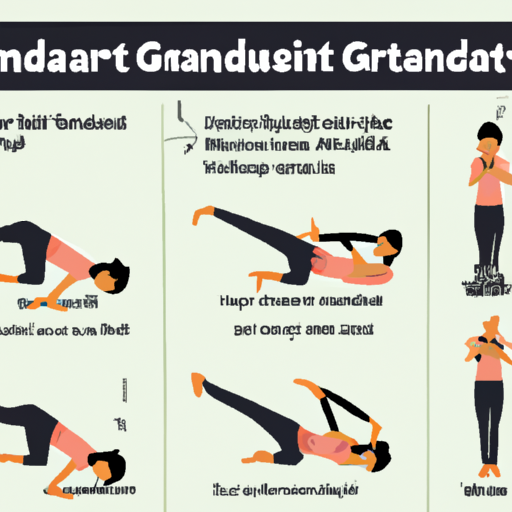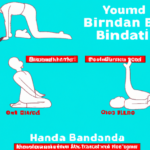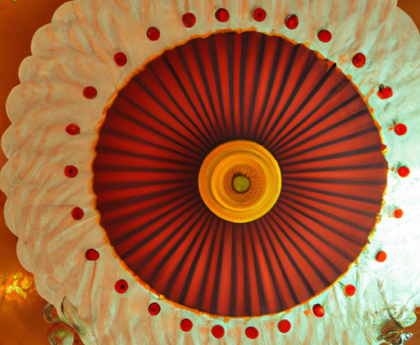“Unlock Your Inner Strength with Garudasana Practice!”
Introduction
Garudasana, or Eagle Pose, is an advanced yoga pose that requires balance, flexibility, and strength. It is a standing pose that helps to improve balance, coordination, and concentration. It also helps to open the hips, shoulders, and chest, and can be used to stretch the upper back and neck. This pose is named after the Hindu god Garuda, who is often depicted as an eagle. Practicing Garudasana can help to improve your overall physical and mental wellbeing. In this article, we will discuss how to do Garudasana practice safely and effectively.
Step-by-Step Guide to Mastering Garudasana (Eagle Pose)
Garudasana, or Eagle Pose, is a standing yoga pose that is both challenging and rewarding. It is a great way to improve balance, flexibility, and strength. Here is a step-by-step guide to mastering Garudasana.
1. Begin in Tadasana (Mountain Pose). Stand with your feet together and your arms at your sides. Make sure your weight is evenly distributed between both feet.
2. Bend your knees slightly and cross your right thigh over your left.
3. Lift your left arm up and wrap it around your right arm. Bend your elbows and bring your palms together.
4. Lift your right arm up and wrap it around your left arm. Bend your elbows and bring your palms together.
5. Lift your elbows up and press your palms together.
6. Lift your gaze up and press your shoulder blades together.
7. Hold the pose for 30 seconds to 1 minute.
8. To release the pose, slowly unwrap your arms and straighten your legs.
By following these steps, you can master Garudasana and reap the benefits of improved balance, flexibility, and strength.
Benefits of Practicing Garudasana (Eagle Pose)
Garudasana, or Eagle Pose, is a standing yoga pose that is beneficial for both physical and mental health. This pose is named after the Hindu deity Garuda, who is known for his strength and power.
Physically, Garudasana helps to improve balance and coordination. It strengthens the legs, ankles, and feet, as well as the core muscles. It also helps to stretch the shoulders, chest, and upper back. This pose can help to improve posture and reduce back pain.
Mentally, Garudasana helps to reduce stress and anxiety. It encourages focus and concentration, and can help to improve mental clarity. It also helps to increase self-awareness and body awareness.
Garudasana is a great pose for beginners and experienced yogis alike. It is a relatively easy pose to learn, and can be modified to suit different levels of flexibility. It is a great pose to practice before or after other yoga poses, as it helps to warm up the body and prepare it for more challenging poses.
Overall, Garudasana is a beneficial pose that can help to improve physical and mental health. It is a great pose for all levels of yogis, and can be easily modified to suit individual needs.
Tips for Beginners to Improve Their Garudasana (Eagle Pose)
1. Start by standing in Mountain Pose (Tadasana). Make sure your feet are hip-width apart and your arms are at your sides.
2. Bend your knees slightly and cross your right thigh over your left.
3. Lift your right foot off the floor and cross it over your left ankle.
4. Balance on your left foot and bring your arms up in front of you.
5. Cross your right arm over your left and bend your elbows.
6. Wrap your forearms around each other and press your palms together.
7. Lift your elbows up and away from your body and draw your shoulder blades down your back.
8. Gently press your palms together and lift your gaze to the horizon.
9. Hold the pose for 30 seconds to 1 minute, breathing deeply.
10. To release, slowly uncross your arms and legs and return to Mountain Pose.
How to Incorporate Garudasana (Eagle Pose) into Your Yoga Practice
Garudasana, or Eagle Pose, is an excellent pose to incorporate into your yoga practice. This pose is a standing balance pose that helps to improve focus, concentration, and coordination. It also helps to strengthen the legs, ankles, and core.
To begin, stand in Mountain Pose (Tadasana) with your feet together and your arms at your sides. Bend your knees slightly and shift your weight onto your left foot. Cross your right thigh over your left thigh and hook your right foot behind your left calf. If you can, bring your heels together.
Next, cross your arms in front of your chest. Your right arm should be on top of your left arm. Bend your elbows and wrap your forearms around each other. If you can, press your palms together.
Now, press your thighs together and lift your elbows up towards the ceiling. Lift your chest and draw your shoulder blades down your back. Gaze forward and hold the pose for five to eight breaths.
To come out of the pose, release your arms and uncross your legs. Step back into Mountain Pose and repeat the pose on the other side.
Garudasana is a great pose to add to your yoga practice. It helps to improve balance, focus, and coordination while strengthening the legs, ankles, and core. With regular practice, you will be able to hold the pose for longer periods of time.
Common Mistakes to Avoid When Practicing Garudasana (Eagle Pose)
Garudasana, or Eagle Pose, is a challenging balancing posture that requires strength, flexibility, and concentration. While it can be a great way to build strength and balance, it is important to practice it correctly in order to avoid injury. Here are some common mistakes to avoid when practicing Garudasana:
1. Not Warming Up: Before attempting Garudasana, it is important to warm up your body with some gentle stretches and poses. This will help to prepare your body for the posture and reduce the risk of injury.
2. Not Engaging Your Core: Engaging your core is essential for maintaining balance in Garudasana. Make sure to draw your navel in towards your spine and keep your core engaged throughout the pose.
3. Not Keeping Your Knees Bent: It is important to keep your knees bent in Garudasana. This will help to keep your balance and prevent strain on your knees.
4. Not Keeping Your Feet Flexed: Flexing your feet will help to keep your balance and prevent strain on your ankles.
5. Not Breathing: It is important to keep your breath steady and even throughout the pose. This will help to keep your balance and focus.
By avoiding these common mistakes, you can practice Garudasana safely and effectively. With practice, you will be able to master this challenging pose.
How to Use Props to Enhance Your Garudasana (Eagle Pose) Practice
Props can be a great way to enhance your Garudasana (Eagle Pose) practice. Props can help to make the pose more accessible and comfortable, allowing you to stay in the pose for longer and to deepen your practice. Here are some tips on how to use props to enhance your Garudasana practice:
1. Use a yoga block or bolster to support your arms. Place the block or bolster between your arms and your chest to help support your arms and shoulders. This will help to reduce strain on your arms and shoulders and make it easier to stay in the pose for longer.
2. Use a strap to help bind your arms. If you are having difficulty wrapping your arms around each other, you can use a strap to help bind your arms together. This will help to keep your arms in the correct position and make it easier to stay in the pose.
3. Use a wall to help support your balance. If you are having difficulty balancing in the pose, you can use a wall to help support your balance. Place your hands on the wall and press your feet into the floor to help you stay in the pose.
By using props to enhance your Garudasana practice, you can make the pose more accessible and comfortable, allowing you to stay in the pose for longer and to deepen your practice.
Conclusion
Garudasana is a great way to improve your balance, strength, and flexibility. It can also help to reduce stress and improve your overall wellbeing. With regular practice, you can improve your posture, coordination, and concentration. It is important to practice Garudasana with proper form and alignment to ensure that you are getting the most out of the pose. With patience and dedication, you can reap the many benefits of this pose.




